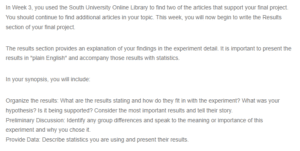Brain Asymmetry
The hypothesis for this experiment stated that there existed a difference in brain activity and perception based on brain asymmetry. To test this hypothesis, an experiment involving a right-handed and left-handed participant was conducted using CogLab 2.0. The left-handed individual was included for control purposes. Each participant was required to select the youngest face between a set of two chimeric faces presented on the screen. Three tests of 14 trials each were conducted with a focus on how the participant selected the youngest face. Each chimeric face is made of a mirror image of an old and a young face. The tables below present the results of the experiment.
Data Summary
| Trial | Chosen chimeric face | Trial | Chosen chimeric face |
| 1 | Younger on right | 8 | Younger on left |
| 2 | Younger on left | 9 | Younger on right |
| 3 | Younger on left | 10 | Younger on left |
| 4 | Younger on left | 11 | Younger on left |
| 5 | Younger on left | 12 | Younger on left |
| 6 | Younger on left | 13 | Younger on left |
| 7 | Younger on left | 14 | Younger on left |
Table 1: Right-handed Test 1 results
| Percentage of choices with younger half face on left | 85.71429 |
Table 2: Data Summary Test 1
| Trial | Chosen chimeric face | Trial | Chosen chimeric face |
| 1 | Younger on left | 8 | Younger on left |
| 2 | Younger on right | 9 | Younger on right |
| 3 | Younger on left | 10 | Younger on left |
| 4 | Younger on right | 11 | Younger on left |
| 5 | Younger on right | 12 | Younger on left |
| 6 | Younger on right | 13 | Younger on left |
| 7 | Younger on left | 14 | Younger on left |
Table 3: Left-handed Test 2 results
| Percentage of choices with younger half face on left | 64.28571 |
Table 4: Data Summary Test 2
Preliminary Discussion
This experiment was chosen so as to deepen my understanding of how brain asymmetry influences brain functioning. The experiment and results were based on the participants’ self-reported handedness. The overall results showed that the right-handed participants selected the youngest face to be on the left. The overall results show 85.71429 percent of the selected youngest face was on the left. On the other hand, regarding the control, the left-handed participant, 64.28571 percent of the choices showed the youngest face was on the left. The experiment results show the reports with the younger face on the left for the right-handed participant to be higher than that of the left-handed participant. This presents a 21.42858 percent difference between the right-handed and left-handed selections on the choice of the perceived youngest face to be on the left.
The differences in the reports present a difference between the face-processing abilities of right-handed and left-handed individuals. As such, right-handed people tend to use the right brain hemisphere to make a judgment on the state of a face. The high percentage of selection of the youngest face on the left by the right-handed participant indicates a high reliance on the right brain hemisphere to make the judgments. On the other hand, the lower percentage of the left-handed participant indicates a reduced aesthetic judgmental ability due to reduced right hemisphere activity or reduced hemispherical differences in the brain. The overall ability to process and judge faces is associated with the specific brain regions interacting and processing data from the environment. Face processing is a perceptive ability that enables individuals to recognize emotions, tell apart friends from foes, and develop bonds based on the changes in facial musculature (Wang et al., 2020). Evidence shows that regions within the right brain hemisphere are activated during the making of aesthetic judgments (Zhao et al., 2020). Stanković (2021) adds that the brain is basically right-biased when perceiving emotional and neutral faces in altered psychophysiological conditions. The evidence and findings of the experiment support the hypothesis that there exists a difference in brain activity and perception based on brain asymmetry.
References
Stanković, M. (2021). A conceptual critique of brain lateralization models in emotional face perception: Toward a hemispheric functional-equivalence (HFE) model. International Journal of Psychophysiology, 160, 57–70. https://doi.org/10.1016/J.IJPSYCHO.2020.11.001
Wang, Y., Metoki, A., Smith, D. V., Medaglia, J. D., Zang, Y., Benear, S., Popal, H., Lin, Y., & Olson, I. R. (2020). Multimodal mapping of the face connectome. Nature Human Behaviour 2020 4:4, 4(4), 397–411. https://doi.org/10.1038/s41562-019-0811-3
Zhao, X., Wang, J., Li, J., Luo, G., Li, T., Chatterjee, A., Zhang, W., & He, X. (2020). The neural mechanism of aesthetic judgments of dynamic landscapes: an fMRI study. Scientific Reports, 10(1). https://doi.org/10.1038/S41598-020-77658-Y
ORDER A PLAGIARISM-FREE PAPER HERE
We’ll write everything from scratch
Question
In Week 3, you used the South University Online Library to find two of the articles that support your final project. You should continue to find additional articles in your topic. This week, you will now begin to write the Results section of your final project.

Brain Asymmetry
The results section provides an explanation of your findings in the experiment detail. It is important to present the results in “plain English” and accompany those results with statistics.
In your synopsis, you will include:
Organize the results: What are the results stating and how do they fit in with the experiment? What was your hypothesis? Is it being supported? Consider the most important results and tell their story.
Preliminary Discussion: Identify any group differences and speak to the meaning or importance of this experiment and why you chose it.
Provide Data: Describe statistics you are using and present their results.

